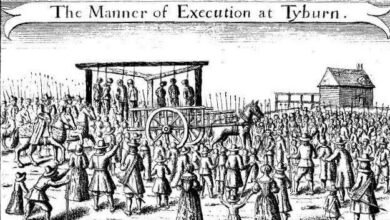Queen Anne’s War: The Second Contest for North America, 1702–1713


 Although King William’s War (1689–1697) had established the basic disputes between New France and the English colonies, the conflict had resolved little beyond making it clear that the smaller French colony was more than capable of defending itself.
Although King William’s War (1689–1697) had established the basic disputes between New France and the English colonies, the conflict had resolved little beyond making it clear that the smaller French colony was more than capable of defending itself.
When news of the War of Spanish Succession (1701–1714), or Queen Anne’s War as it would become known in North America, arrived in 1702, few envisioned that the resumption of the previous conflict would grow to engulf eastern North America from Newfoundland to Florida, pitting the Spanish, English, and French colonies along with their respective native allies into a concerted contest for control of the continent.
From the storming of Spanish St. Augustine and the opening shots along the Maine frontier, through the implementation of a series of profit-driven Indian Wars and the destruction of the Spanish mission system in Georgia and Florida, to the direct involvement of Britain in the closing days of the conflict, Queen Anne’s War: The Second Contest for North America, 1702–1713 (Westholme Publishing, 2021) carries the reader through this oft forgotten, but crucial period in North American history.
While the main focus was on border defense and fighting elsewhere in North America, French forces and their Native American allies frequently conducted raids into New York. A notable example was the attack on the Kittle family in Schaghticoke on the Hoosic River in 1711, although more remembered is the infamous 1704 raid on Deerfield, Massachusetts and the 1708 raid on Haverhill, north of Boston.
The Iroquois Confederacy played a crucial role, with the French being wary of attacking New York for fear of involving what was the most powerful nation in the Northeast. English colonists often relied on the Iroquois for support and protection.
In 1709, a British force of 1,500 soldiers along with 600 Mohawk warriors, cut a road through the forest which began at Schuylerville on the east side of the Hudson River, and extended northward to Fort Edward, and then following Wood Creek to Whitehall on Lake Champlain.
Along this road, three forts were constructed – Fort Anne, Fort Nicholson and Fort Saratoga. It was also during Queen Anne’s War that Fort Miller, located at the second Carrying Place on the west side of the Hudson River was constructed in 1711.
Ultimately, the French would violate the terms of the Treaty of Utrecht which ended Queen Anne’s War, when they erected a massive stone fort at
Crown Point.
Told from the halls of power in North America and Europe, and through the eyes of the men and women who found themselves embroiled in this brutal realignment of colonial interests, Queen Anne’s War recreates the world of early North American expansion at the ground level, providing riveting accounts of the battles across settlements and wilderness as well as the motives, conditions, triumphs, and failures of the Europeans and their respective Native American allies.
Based on extensive primary source research and command of English, French, and Spanish sources, the narrative not only describes the economic and geopolitical ramifications of the war that reshaped North America, but intriguingly reveals the sense of independence emerging in the colonies, from Puritan New England to plantation South Carolina, at the close of the war.
Book Purchases made through this Amazon link support the New York Almanack’s mission to report new publications relevant to New York State.
Read more about Queen Anne’s War in New York.
Source link




